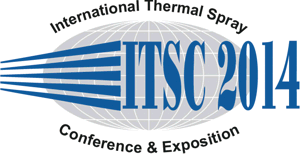
|
| Abstract No.: |
|
| Title: |
Examination of the characteristics of residual pores in high-temperature sintered plasma sprayed YSZ coatings
|
|
| Authors: |
Chang-Jiu Li / Xi'an Jiaotong University, P.R. China
Tao Liu* / State Key Laboratory for Mechanical Behavior of Materials, Xi'an Jiaotong University, China
Guan-Jun Yang/ State Key Laboratory for Mechanical Behavior of Materials, Xi'an Jiaotong University, China
Cheng-Xin Li/ State Key Laboratory for Mechanical Behavior of Materials, Xi'an Jiaotong University, China
|
|
| Abstract: |
Plasma-sprayed YSZ coatings are well established thermal barrier coatings (TBCs) which have been widely applied to the components in high temperature sections in gas turbines. However, high temperature exposure for certain long duration causes the sintering which heals two dimensional interlamellar pores as the nonbonded lamellar interfaces and intra-splat pores as microcracks in plasma-sprayed ceramic coatings. Such sintering effect increases the stiffness and decreases the thermal conductivity of the coating, and consequently reduces the stability and durability of TBCs. However, it is expected that large pores with a wide opening is difficult to be eliminated through sintering. In this study, in order to reveal the possible opening of two dimensional pores over which pores are free-sintering, 8 wt.% yttria stabilized zirconia (8YSZ) coatings were deposited by atmospheric plasma spraying and exposed at different temperatures for different durations. Thereafter, the characteristics of residual pores in the coatings were characterized by SEM and EDS using parameters of the microcracks in terms of crack opening (width) at the direction perpendicular to lamella plane. Results show that the porosity decreases with increasing sintering temperature and duration. Moreover, it was found that after sintering there still exist large pores and the sizes of residual pores are dependent on sintering conditions. The apparent minimum opening of cracks increases with the increase of sintering temperature. The relationship between the opening of residual cracks and sintering condition is examined. The present results will benefit the design of pores in TBCs which endow TBCs with a high sintering-resistance.
|
|
